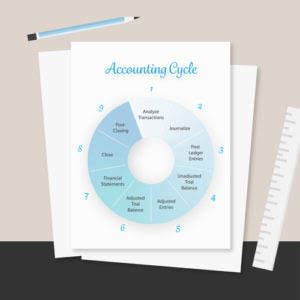Construction In Progress Accounting

This ensures transparency and allows you to choose the best options for your budget. We provide a range of services including fractional CFO, bookkeeping, accounting, and financial strategy. Each service is designed to meet the unique needs of scaling startups across various industries.
Why Auditors Target Construction Companies?
When the asset is ready for its intended use, the accumulated CIP expenses can then be transferred to the appropriate fixed asset account and depreciated accordingly. Construction in progress (CIP) is what are retained earnings recorded as an asset on the balance sheet under non-current assets. When costs like materials, labor, equipment rental etc. are incurred for a construction project, the construction in progress account is debited and accounts like cash, accounts payable etc. are credited. Construction in progress accounting plays a crucial role in tracking and managing construction costs throughout the entire construction project lifecycle.

Receive actionable business and accounting insights directly to your inbox.

Each method tells a different story about revenue, but neither method gives the whole story – that’s where the work in progress (WIP) method comes in. – Construction companies must also track anomalies like job costing, retention, progress billings, change orders, and customer deposits. – Construction in progress accounting is more complicated than regular business accounting. Managing CIP accounts with others or even separately requires experience and proper knowledge.
Insurance
Unanticipated events like weather delays, skilled labor shortages, inflation in material prices, etc. routinely lead to budget overruns in construction. Tracking and communicating the true project cost on an ongoing basis via CIP accounting is vital. Despite best efforts, construction projects frequently encounter events that complicate CIP accounting. Such measures minimize errors, safeguard assets, ensure the accuracy of financial data, and facilitate auditing processes. They enable construction firms to have confidence in their reported CIP figures.
Principles of Construction Cost Tracking in CIP Accounting
- This incoterm is often used in multimodal shipments (where goods are transported using more than one method, such as road, rail, or sea).
- A construction contract is a specific contract negotiated to build a fixed asset or group of interrelated assets.
- Robust CIP accounting ensures such complex projects are delivered on time and within budget.
- For a construction firm that makes a contract to sell fixed assets, the objective is the same.
- Track billing of materials, implement inventory control systems, manage supplier base, and reduce unnecessary costs.
This fosters trust and confidence among investors, lenders, and other stakeholders, leading to stronger partnerships and increased opportunities. Under the POC method, revenue is recognized as work progresses and can be calculated by multiplying the total estimated revenue by the percentage of completion. This approach ensures that revenue is matched with the corresponding expenses and provides a more realistic view of the financial performance of a construction project. While accounting construction in progress offers many benefits, it also presents several challenges and considerations that companies need to be aware of. One of the main challenges is determining the appropriate timing for capitalizing costs. This requires careful judgment and a thorough understanding of the project and its various stages.
Financial Management: Overview and Role and Responsibilities
After the construction has been completed, the relevant building, plant, or equipment account is debited with the same amount as construction in progress. After the completion of construction, the company will record depreciation on the asset. The appropriation of revenues and expenses should be made in the relevant accounting period according to the work’s percentage completion.
- On the income statement, WIP defers recognizing costs as expenses until the related goods are finished, thereby increasing current period gross profit, operating income, and net income.
- Construction in progress accounting is one of the essential categories for construction firms to track.
- One of the key challenges of CIP accounting is determining when and how to capitalize costs.
- This technique works because construction projects are way more complex than other projects.
- Expenditures are accumulated in a CIP account throughout the construction timeline.
- Accurate billing and revenue recognition play a vital role in the financial management of construction projects.
Depreciation Expense Account Vs. Allowance for a Depreciation Account
CIP allows for a more accurate portrayal of a company’s financial position and performance, providing stakeholders with the necessary information to make sound judgments. Construction in progress is shown as a long-term asset on the balance sheet under the property, plant, and equipment section. CIP is not depreciated until the asset is placed into service upon completion, at which point it is reclassified to the appropriate fixed asset account. Technology also plays a crucial role in streamlining construction financial management.

Importance of Robust Internal Controls
The CIP Incoterm refers to a trade term where the seller is responsible for delivering the goods and handling the insurance until the goods reach the agreed-upon destination. This incoterm is often used in multimodal shipments (where goods are transported using more than one method, such as cip meaning accounting road, rail, or sea). Before we dive into the details, it’s important to note that accounting terminology can sometimes be complex and confusing. We aim to simplify the concept of CIP and present it in a user-friendly manner, providing practical examples and real-world scenarios to better illustrate its application.
- To simplify it, the CIP account is just an account that records all the different expenditures during a construction project.
- CIP represents the portion of a project’s costs that is still in progress and has not yet been completed or put into service.
- As these solutions gain maturity, they are likely to be game changers in elevating CIP accounting and financial control.
- This includes reflecting CIP accounting data accurately on mandatory financial statements.

In the realm of financial reporting, balance sheets serve as vital documents, offering insights into a company’s financial health by detailing its assets, liabilities, and equity at a specific point in time. Upon completion of the project, CIP is reclassified to the appropriate fixed asset account like buildings or equipment, and capitalization stops. Capitalized costs include materials, labor, interest and other costs to ready the asset for use. Construction in progress costs are expensed by debiting the CIP asset account and crediting accounts like cash, accounts payable etc. as costs are incurred. Once construction is complete, the asset is reclassified from CIP to a fixed asset account like buildings, where it begins to be depreciated.

Commenti recenti